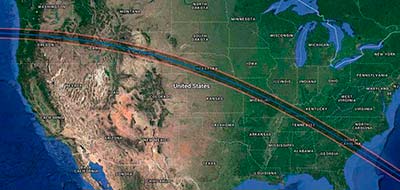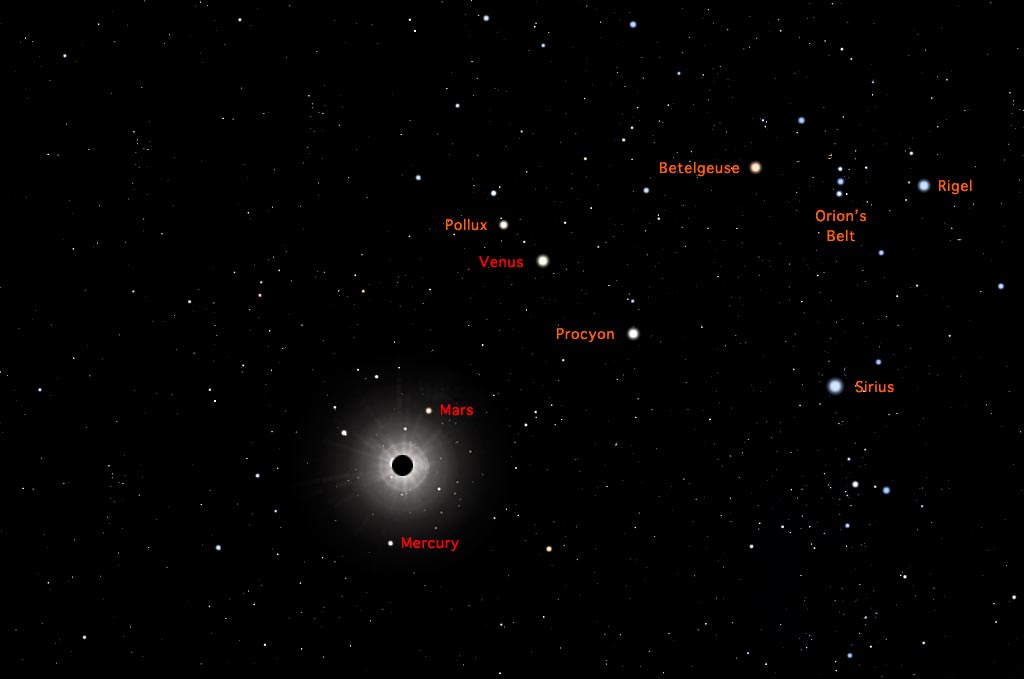Many folks think of the eclipse as a 2 hour event, and it is—from partial to total, from total to partial, and then the return of the uncovered Sun. But the most important parts of a total eclipse are the 5 minutes before totality, the time of totality itself, and the 2 or 3 minutes afterward. This is what this article concentrates on.

Find out the exact length of totality
in your location
with our interactive
precision map.
ECLIPSE MAP
Be sure and set a countdown timer at the beginning of totality so that you hear a warning chime to alert you to stop looking through telescopes or binoculars in plenty of time to prevent blindness.
To find out exactly when the Moon will completely cover the Sun for your exact location, go to our precision map and follow the instructions.
Get a print version of this article.
5 minutes before totality, you should be completely situated with no distractions so you can watch the Moon slowly consume the Sun.
Whatever weather conditions prevail, you will have to live with them because there is no longer any time to move to another location. If you do, you risk missing the entire totality event, which at best will be less than 2.5 minutes long.
With your eclipse glasses still on, enjoy the approaching darkening, but 2 minutes before totality, take them off and look at the ground. You may be able to see the mysterious shadow bands—whimsical bands of shadow that race across the landscape seconds before totality. (Scientists don't know what causes them exactly, but here at WPO we think they are caused by the same slit-effect that generates Moiré patterns.)
At the same time, look towards the West, where you may be able to see the 70 mile oval of the Moon's shadow racing towards you at 1650 miles per hour.
When totality begins, the temperature drops and the sky goes dark. Look to the sky to identify the planets and constellations that have now become visible. Use our printable star chart to help you find 3 planets very near the Sun (Mars, Mercury and Venus) and the Belt of Orion:

download a printable version of this map
guided tour of this map
Take a long look directly at the Sun, which is now no brighter than Venus in the sky. Take out your binoculars or telescope and examine closely the Sun's atmosphere, corona, and Sun spots.
The Diamond Ring Effect announces the end of totality. Look on the ground for more racing shadow bands and see if you can see the Moon's shadow heading East away from you.
As the landscape brightens and colors become less saturated, put your eclipse glasses back on and watch the Sun slowly reappear.
If you were in the right spot and had a clear patch of sky for those precious few minutes, congratulations, you have just witnessed a Total Eclipse of the Sun!
Now the only thing left is to get certified!